Tue 14 Apr 2009
The Passover Diet Continues
Posted by Bria under Main Dishes
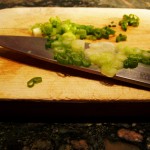
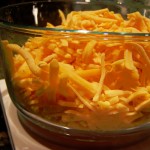
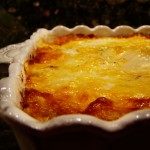
The Midwest is well-known for its casserole canon. You have your hot dish, your noodle ring – the sorts of oven-baked concoctions that appear in starring roles at stock the fridge showers for a second babies in Wisconsin (and seem to make their way into every kitschy portrayal of Midwesterners in film and on television). It’s a lesser-known fact that Utah also boasts a mean casserole repertoire. I know, you’re thinking that Utah is known for having lots of one thing…
…Jello. And you’d be right. I believe Utah consumes more Jello than the rest of the country put together. As much as I have tried to disavow it at varying points in my life, I can’t help it; I love me some rainbow Jello cake. I have made it once, and it was a colossal pain, but so worth it. The next time I have a free day and am on a sugar binge, I’ll whip one up and show you. It’s just…wow. Unlike anything you’ve ever seen.
But we’re here to talk casserole (to dish about casserole? Ouch). I’m pulled in a casserole way by more than nostalgia. They are an ideal endeavor for busy people; a little work up front and you can eat well for several servings (and if the thought of eating lasagna for four consecutive meals makes you ill, they often freeze well). In some circles, the act of creating one of these baked wonders is called “putting up” a casserole, which I cannot explain linguistically but love and use often. It’s one of those charming bits of vernacular that you want to snatch up and squeeze for yourself because it hits the ear just right. Or maybe I just like things that sound vaguely Southern.
Whatever, let’s put up a Passover casserole.
Farfel and Cheese
Serves 8-10
Adapted from Joan Nathan’s Jewish Holiday Kitchen Cookbook
This is absolutely delicious. It is very reminiscent of macaroni and cheese. I like it as-is; John prefers to add ketchup or tabasco. FYI - one large can of farfel is enough for 2 batches.
3 cups farfel
3 egg whites
2 eggs
1 scallon, diced
½ lb cheddar cheese, shredded
2 cups milk
1 ½ c nonfat (plain) yogurt
Salt and pepper
Butter
Preheat the oven to 350.
In a medium bowl, whisk one egg and the egg whites with a fork. Fold in the farfel, stirring well until the mixture is fully combined and there are no dry spots of farfel left. Stir in the scallion.
Use a bit of butter to grease an 8×8” casserole dish. Spread the farfel mixture into an even layer. Using the same bowl you used to mix the farfel, whisk together the milk, yogurt, remaining egg, and about a teaspoon of salt. Add a few turns of freshly ground pepper.
Cover the farfel mixture with the shredded cheddar cheese in one, even layer. I save time by buying giant bags of shredded cheese at Costco and freezing it into small ziplocks, but you can also often find shredded cheese on sale at the grocery store. It’s worth stocking up, it freezes very well.
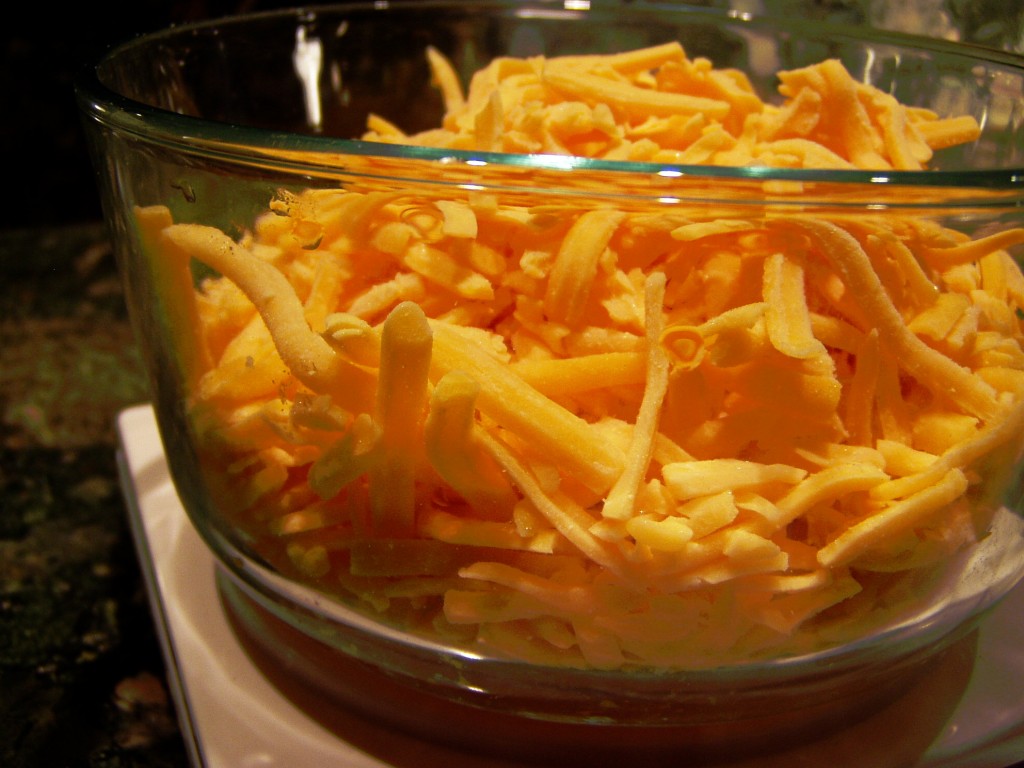
Gently pour the wet ingredients over the cheese, moving your bowl around to make sure you cover every bit of the dish. If there are any bare spots at this point, use your spatula to smoosh it around until everything is even. If you like, dot the top of the mixture with bits of butter (though I often forget to do this). Cover the entire thing with foil and bake, covered, for 30 minutes.
While the casserole bakes, do your dishes! I hate a messy kitchen, so I always clean as I go. By reusing the farfel bowl to mix your wet ingredients, you cut down on your big washables by one order of magnitude. During the time it takes the casserole to do its covered bake session, you can get the rest of the kitchen clean and move on to something important, like eating bits of shredded cheese while no one is looking.
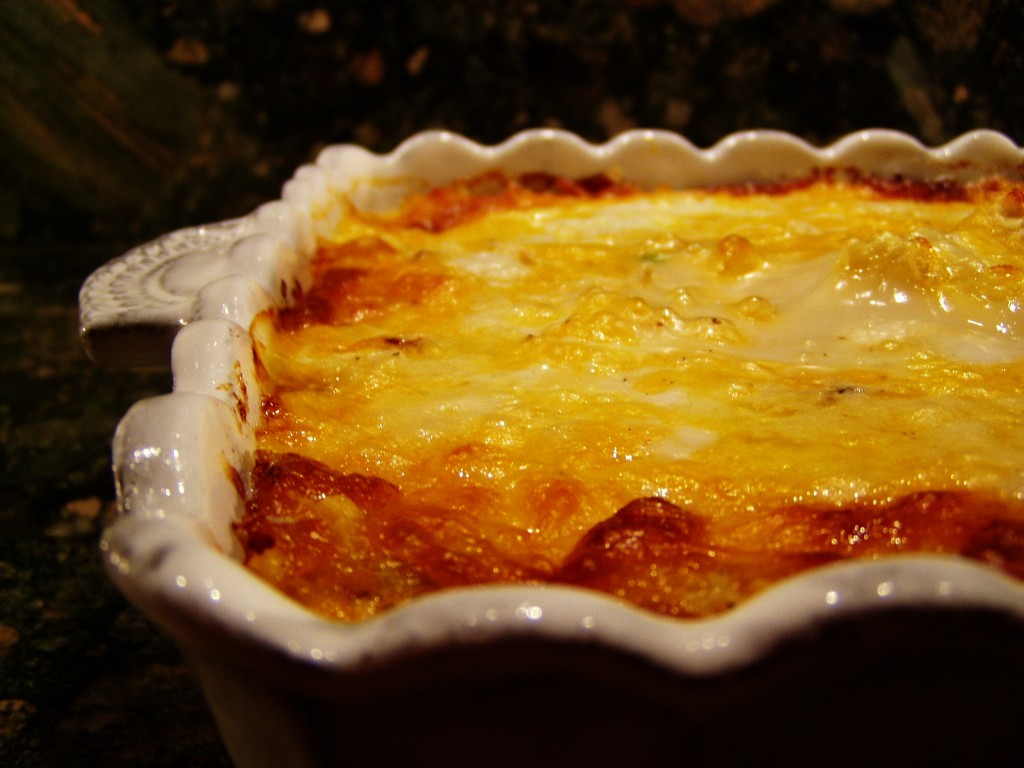
After 30 minutes, remove the foil and bake uncovered until the top is a lovely golden brown – between 20 and 30 minutes. Allow to rest for 10 minutes outside the oven once it’s done, and serve warm. I find this reheats very well, both in the microwave and toaster oven.
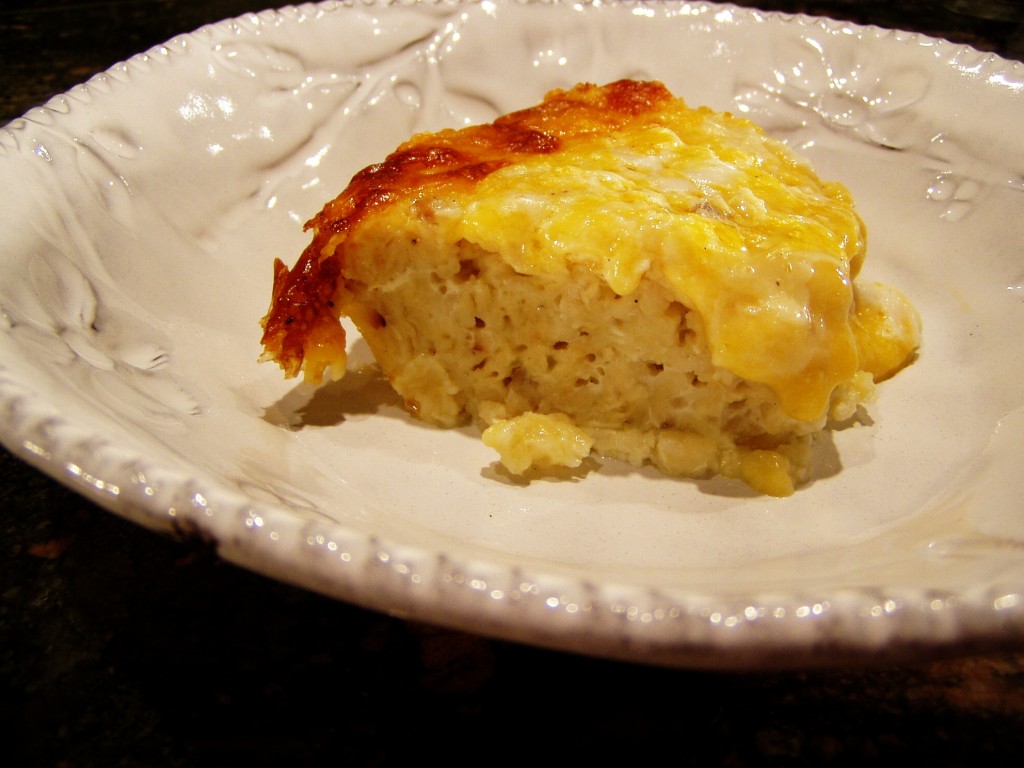
I must note that I first received this recipe from my copyright professor in law school, the wonderful Jessica Litman (who is an incredible cook, in addition to digital copyright expert extraordinaire). I mentioned one day after class (I swear there was context, though I can’t recall exactly what it was) that I was just about to finish the conversion process. Passover was starting in a week, and Professor Litman graciously armed me with several Joan Nathan cookbooks as well as her personal Passover recipe compilation. Since I obviously hadn’t grown up eating Passover foods, she gave me one family’s take on how to successfully navigate the holiday. I am forever grateful to her for this, not just for the food, but for the support and acceptance. That first Passover was truly a chag sameach for me.
Hello there, just became alert to your blog through Google, and found that it’s really informative. I’m going to watch out for brussels. I will appreciate if you continue this in future. Many people will be benefited from your writing. Cheers!
My brother suggested I could like this weblog. He was totally suitable. This publish truly created my day. You cann’t imagine merely how much time I had spent for this info! Thanks!
Get going with highly amazing custom home in whitefish now on a best offer and gets your business ROI immediately!
Locate now a high quality london business relocation that is this week available and reasonably priced this week only!
amoxicillin 875mg
Locate now a high quality renting with a dog that is this week available and at great prices this week only!
Get now the top renting with pets that are this week available and currently available this week only!
Save now the best dog friendly rental properties currently this week available and at great prices this week only!
Locate now the best pet friendly rent london that is this week available in addition at great prices this week only!
Save now the top london relocation agents that are this week available in addition at great prices this week only!
advair diskus
Procure highly amazing custom homes now on a best offer and gets your business ROI immediately!
lioresal baclofen
Locate now a high quality best places to live near london with good schools currently this week available and reasonably priced this week only!
finasteride
Locate now the top london relocation agents that are this week available and at the best price this week only!
Locate now a high quality pet rentals that is this week available in addition on sale this week only!
Locate now the best london business relocation that are this week available in addition at the best price this week only!
i frequent hair salons because i always want to keep my hair in top shape;;
I undoubtedly did not know that. Learnt some thing new today! Thanks for that.
Great post. I used to be checking continuously this blog and I am inspired! I take care of such info a lot. I was looking for this certain information for a very long time.
I take care of such info a lot. I was looking for this certain information for a very long time.
Extremely useful info specially the remaining
phase
Thank you and best of luck.
amoxicillin online fast delivery
Locate now the best living in london as a student that’s this week available in addition currently available this week only!
Hire now a high quality london business relocation currently this week available and reasonably priced this week only!
I like meeting utile information , this post has got me even more info! .
Locate top quality new home builder now on a best offer and gets your money flowing immediately!
Wholesale Cheap Handbags Will you be ok merely repost this on my site? I’ve to allow credit where it can be due. Have got a great day!
tretinoin 0.0375 cream
Get now a high quality best places for families to live in london that is this week available and currently available this week only!
Save now the best renting with dogs that’s this week available and reasonably priced this week only!
Locate now a high quality things to do in london for students currently this week available and at the best price this week only!
Hire now the best london relocation services review that are this week available and reasonably priced this week only!
ventolin prices
coupon retin a
Hire now a high quality london relocation currently this week available and at great prices this week only!
Hire now the best london relocation services that’s this week available and reasonably priced this week only!
Aw, this was a very nice post. In thought I want to put in writing like this moreover – taking time and precise effort to make an excellent article… but what can I say… I procrastinate alot and under no circumstances appear to get something done.
Oh no, all my dreams and hopes are gone. Can the communism save us?
noroxin
Locate the best build homes today on a best offer and gets your business ROI immediately!
150 mg diflucan
Save now the best london business relocation that are this week available in addition on sale this week only!
Get now the top rentals with pets that’s this week available and on sale this week only!
Hire now the top pet friendly rent london that is this week available and reasonably priced this week only!
Get now a high quality renting with dogs that is this week available and at the best price this week only!
how much is tamoxifen cost
Hire now the top moving to london with a baby that are this week available in addition on sale this week only!
Get now the best pet friendly letting agents that is this week available and reasonably priced this week only!
reputable mexican pharmacies online: cmqpharma.com - medication from mexico pharmacy
Procure top quality whitefish custom home builders immediately on a best offer and gets your business ROI immediately!